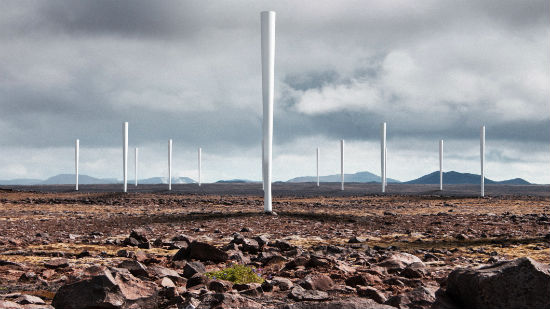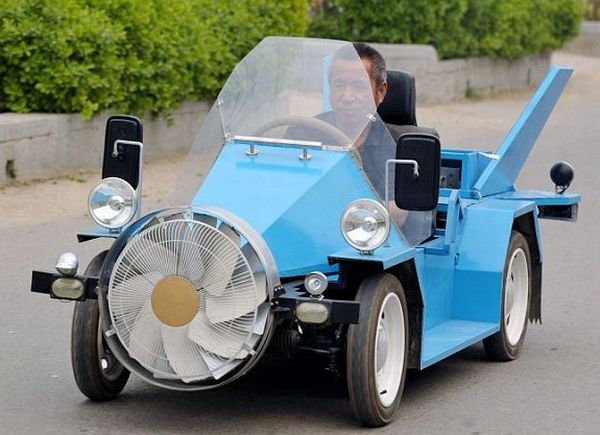
 A vertical axis wind farm design can increase tenfold the output power simply by placing wind turbines to react each other.
A vertical axis wind farm design can increase tenfold the output power simply by placing wind turbines to react each other.
A study field on two acres wind farm in northern Los Angeles County was conducted by researchers from California Institute of Technology led by John Dabiri.
Vertical axis wind farm are ideal for the experiment because wind turbines are positioned close to one another and all energy of the blowing wind could be captured. Wind turbines are in opposite direction of its neighbours increasing the efficiency. Using this type of constructive interference is the idea of Dabiri and allows each wind turbine to spin faster. The paper describing resulting field tests appears in the July issue of the Journal of Renewable and Sustainable Energy.
Despite their improvements the usual wind farm with horizontal axis turbines is rather inefficient says Dabiri. According to him, “much of the wind energy that enters a wind farm is never tapped.” Wind turbines design trends to larger units to capture more wind on taller towers but bring also other challenges such as higher costs and more engineering issues.
Dabiri with its team is focused to design wind farms, to maximize its efficiency in energy harvesting closer to the ground. Winds are blowing less energetically at 30 ft rather than 100ft, “But the global wind power available at 30 ft is greater than the world’s electricity usage, several times over,” he added.
During last summer field tests, the team measured rotational speed and power generated by each of six wind turbines placed in different configurations. Tests showed the best arrangement in which spacing the wind turbines nearly eliminated aerodynamic interference between units. All six vertical axis wind turbines generated from 21 to 47 W/square meters, when a comparable size conventional farm generates from 2 to 3 W/square meters.
Using the comparison, to remove the aerodynamic interference between horizontal axis wind turbines is required 20 diameters, approximately more than a mile between the largest wind turbines in use now.
“The next steps are to scale up the field demonstration and to improve on the off-the-shelf wind-turbine designs used for the pilot study,” says Dabiri. He suggests smaller, less expensive vertical axis turbines arranged in the right way can capture sufficient energy in a less environmentally intrusive manner.
Now Dabiri and colleagues are studying a larger array of 18 vertical axis wind turbines to follow up last year’s field study.



